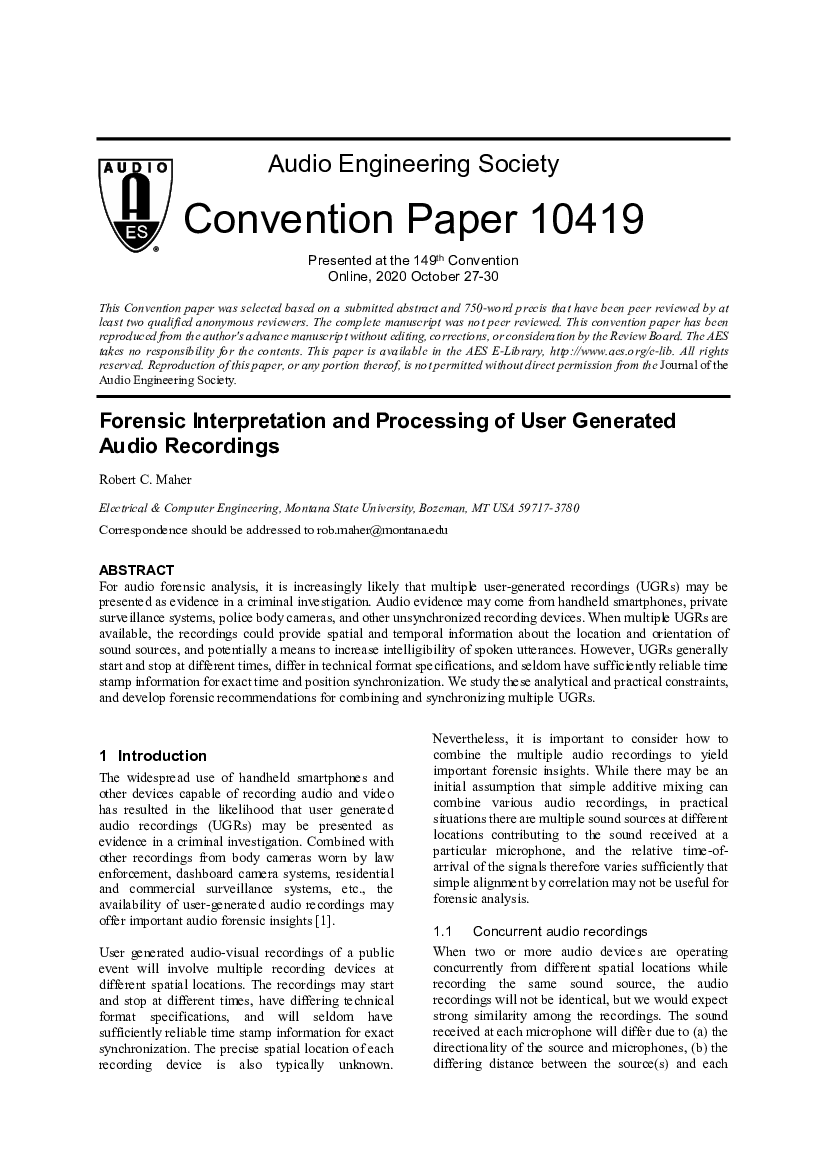Home / Publications / E-library page
You are currently logged in as an
Institutional Subscriber.
If you would like to logout,
please click on the button below.
Home / Publications / E-library page
Only AES members and Institutional Journal Subscribers can download
For audio forensic analysis, it is increasingly likely that multiple user-generated recordings (UGRs) may be presented as evidence in a criminal investigation. Audio evidence may come from handheld smartphones, private surveillance systems, police body cameras, and other unsynchronized recording devices. When multiple UGRs are available, the recordings could provide spatial and temporal information about the location and orientation of sound sources, and potentially a means to increase intelligibility of spoken utterances. However, UGRs generally start and stop at different times, differ in technical format specifications, and seldom have sufficiently reliable time stamp information for exact time and position synchronization. We study these analytical and practical constraints, and develop forensic recommendations for combining and synchronizing multiple UGRs.
Author (s): Maher, Robert C.
Affiliation:
Montana State University, Bozeman, MT USA
(See document for exact affiliation information.)
AES Convention: 149
Paper Number:10419
Publication Date:
2020-10-06
Import into BibTeX
Session subject:
Audio Applications and Technologies
Permalink: https://aes2.org/publications/elibrary-page/?id=20956
(7004KB)
Click to purchase paper as a non-member or login as an AES member. If your company or school subscribes to the E-Library then switch to the institutional version. If you are not an AES member Join the AES. If you need to check your member status, login to the Member Portal.

Maher, Robert C.; 2020; Forensic Interpretation and Processing of User Generated Audio Recordings [PDF]; Montana State University, Bozeman, MT USA; Paper 10419; Available from: https://aes2.org/publications/elibrary-page/?id=20956
Maher, Robert C.; Forensic Interpretation and Processing of User Generated Audio Recordings [PDF]; Montana State University, Bozeman, MT USA; Paper 10419; 2020 Available: https://aes2.org/publications/elibrary-page/?id=20956